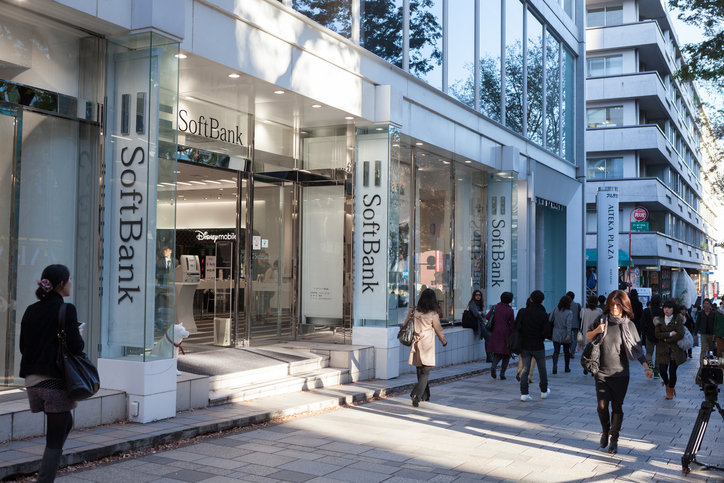Softbank’s roughly $100 billion Vision Fund has raised eyebrows and valuations around the world.
Follow Crunchbase News on Twitter & Facebook
Its tectonic heft affords the capital pool hundreds of millions of dollars into a host of late-stage technology companies. But the Vision Fund’s future isn’t unique. Instead, it will be shared.
According to TechCrunch’s reporting, Softbank CEO Masayoshi Son called the first Vision Fund a “first step.” He went on to note that the Vision Fund’s 10 trillion yen (the real figure is higher) “is simply not enough,” promising to “briskly expand the scale,” adding that “Vision Funds 2, 3 and 4 will be established every two to three years.”
You can quickly run the math: If $100 billion wasn’t enough, perhaps $200, $300, or $400 billion will be.
Softbank’s mad dash to raise and spend those sums is staggering. To understand what’s going on, let’s quickly remind ourselves how the Vision Fund came to be, how it’s being spent today, and how that might scale if the firm does manage to reload its venture cannon.
October And Everything After
First, it’s worth noting that Softbank is not new to the investing game. It was early in Alibaba and Sina. But the company’s investments in other companies during the first dotcom boom weren’t always a success. For instance, Softbank participated in two Webvan rounds, according to Crunchbase.
Softbank announced the Vision Fund just over a year ago, on October 14, 2016. The release noted that Softbank intended to put up about $25 billion of capital and that Saudi money would account for up to $45 billion.
Notably, at the time, Softbank wasn’t wildly clear about what the Fund was being built for. Softbank only noted that it would “accelerate [Softbank’s] global growth strategy through the investments via the Fund and alliances with portfolio companies of the Fund.”
The Fund announced that it had raised $93 billion in May. By that point, Softbank was explaining itself more. The Vision Fund, Softbank said at the time, “will seek to acquire minority and majority interests in both private and public companies,” stating that it would consider investing in small, “established” companies.
The Fund also said that its “long-term investments” would land among a host of niches, “including but not limited to: IoT, artificial intelligence, robots, mobile applications and computing, communications, infrastructure and telecoms, computational biology and other data-driven business models, cloud technologies and software, consumer internet businesses and financial technologies.”
We quote at length to preserve the tone, which seems earnest enough, to underscore how, to be unkind, unfocused the Vision Fund seemed at the time.1
However, in between the October 2016 announcement of the Fund, and its May 2017 first close, other details had come to light that helped explain a bit of what Softbank is up to.
Turning once again to TechCrunch, a piece from this February contains answers to both why Softbank raised so much money to invest, and also why it is rushing to put that capital — and more, as we previously discussed — to work.
“I totally believe this concept,” he said, of the Singularity. “In next 30 years this will become a reality.”
“If superintelligence goes inside the moving device then the world, our lifestyle dramatically changes,” he continued, pointing out that autonomous vehicles containing a superintelligent AI would become smart robots.
“There will be many kinds. Flying, swimming, big, micro, run, two legs, four legs, 100 legs,” he added, further fleshing out his vision of a robot-infested future. […]
“I truly believe it’s coming, that’s why I’m in a hurry – to aggregate the cash, to invest,” he noted.
Well, then.
First Steps
We now know a bit about how quickly the Vision Fund came to be, and a little of the psychology behind why it exists. To help us understand what might come for Vision Funds 2 and above, let’s examine what startups the firm has put money into to date.
Leaning on CNN’s solid list of the Vision Fund’s largesse, let’s pick a few: WeWork, Slack, Roivant, Flipkart, Plenty, and Fanatics.
WeWork is an asset-light coworking space, Slack is an enterprise collaboration app, Roivant is, to quote CNN, “A biotech firm that continues research on drugs that were no longer being developed by major pharmaceutical companies,” Flipkart is Indian ecommerce, Plenty wants to make farming more efficient, and Fanatics is an ecommerce shop for sports gear.
How those investments guide Softbank isn’t clear. It becomes even less clear when we recall that Son noted that a singularity-fueled future was quickly coming.
The Vision Fund’s scale is also notable. Given how much money it has to invest, and how quickly the firm wants to invest that capital, it has to find quite a lot of large, attractive positions. That’s not going to be easy now or in the future. As Crunchbase News wrote as part of a deep-dive on the mechanics of Softbank’s investing activities:
At the time of writing, Crunchbase data shows that, globally, there were just 126 VC, PE, and Post-IPO equity financing rounds larger than $250 million. (We chose $250 million because it’s a round number and also the amount SoftBank invested in business lending platform Kabbage’s Series F.) In US-based companies, there were just 50 rounds of that size closed in 2016.
Even if the global venture capital and private equity markets continue to recover from their mid-2016 lows, and there are more of these quarter-billion-plus rounds, it’s still going to be difficult to invest that capital judiciously. In a good year, $100 billion is about the size of the entire global VC market.
That problem doesn’t go away when the Vision Fund is spent. Assuming another fund is founded, it is a bet that prior investment opportunities were not exhausted by the preceding vehicle.
There has to be more road ahead to drive even after a fill-up.
Successive Shocks
This brings us back to the potential of impending Vision Funds and what impacts those funds could have on startups.
To put Vision Fund 2 into context, here are some numbers.
According to the Crunchbase Unicorn Leaderboard, there are 267 private companies worth a staggering $920.8 billion.
But notably, they have raised just $176 billion. It should not surprise you that the firms are worth a multiple of their accepted capital; venture kids and their late-stage siblings buy stakes in companies, not whole shops. So it stands to reason that the list of unicorns would be worth several times what was raised.2
In the context of how much capital it took to birth and raise a quarter-thousand unicorns, Softbank could outstrip those sums in just two Vision Funds. But as Softbank is spending the bulk of its far-seeing dollars on later-stage investments — hardly surprising given that bigger deals consume a multiple of the cash of smaller transactions — it could probably cover the late-stage tab of even more companies than just all the unicorns in the world.
So what impact will a second Vision Fund have? Perhaps the same as the first, but even more. The first Vision Fund is already changing the game for late-stage tech companies. As Reuters reports in a piece aptly-titled “SoftBank’s big checks are stalling tech IPOs:”
Big cash infusions for startups from an ever-expanding group of financiers, led by SoftBank Group Corp […] and Middle East sovereign wealth funds, have extinguished hopes that the technology IPO market would bounce back this year.
These deep-pocketed financiers, which have traditionally invested in the public markets but are seeking better returns from private tech companies, have enabled startups to raise more money, stay private longer and spurn the regulatory hassles of an IPO even as they become larger than many public companies.
So perhaps the cash-fueled infinite-adolescence of ever-private unicorns will simply elongate in a Vision Fund II, and III, and IV world.
Questions
Normally, at this point in a piece, I’d work to sum towards a particular direction. In this case, all I have are questions. Here are a few:
- Can Softbank avoid overpaying for assets given its quick pace of dealmaking?
- Can Softbank avoid overpaying for assets given its quick pace of dealmaking over a multi-fund timeframe?
- Can Softbank avoid suffering from extensive paper losses if the markets turn before its new minority stakes in various firms mature?
- Can Softbank find enough hooks to hang billions on for its first Fund, let along for those yet to come?
- Can Softbank avoid investing so broadly that it accidentally creates an index type fund of late-stage companies?
The last question may be a bad one. To some extent, that might be Softbank’s goal. There are fewer late-stage companies than early-stage companies, so the firm has to make fewer bets (but expend more dollars, of course) than firms that shot for a similar model with startups.
Either way, it can be difficult to fully-square the company’s stated vision, so far as we can understand it externally, to its investments. After all, if the firm is only in a rush to raise and invest due to impending mega-shifts in technology, the investments it has made thus far don’t appear aligned to those goals. The question is compounded with the addition of another $100 billion of ammunition.
Still, you have to hand it to Softbank: It has guts.
- Ironically unironic?
- Posit: The higher the multiple of accepted capita (capital in) compared to market value of a company, or group of companies, the faster and more efficiently that they have grown. Homework: Is that general maxim ever wrong? I can think of one macro environment that could turn that on its head.

Stay up to date with recent funding rounds, acquisitions, and more with the Crunchbase Daily.







![Illustration of stopwatch - AI [Dom Guzman]](https://news.crunchbase.com/wp-content/uploads/Halftime-AI-1-300x168.jpg)



67.1K Followers